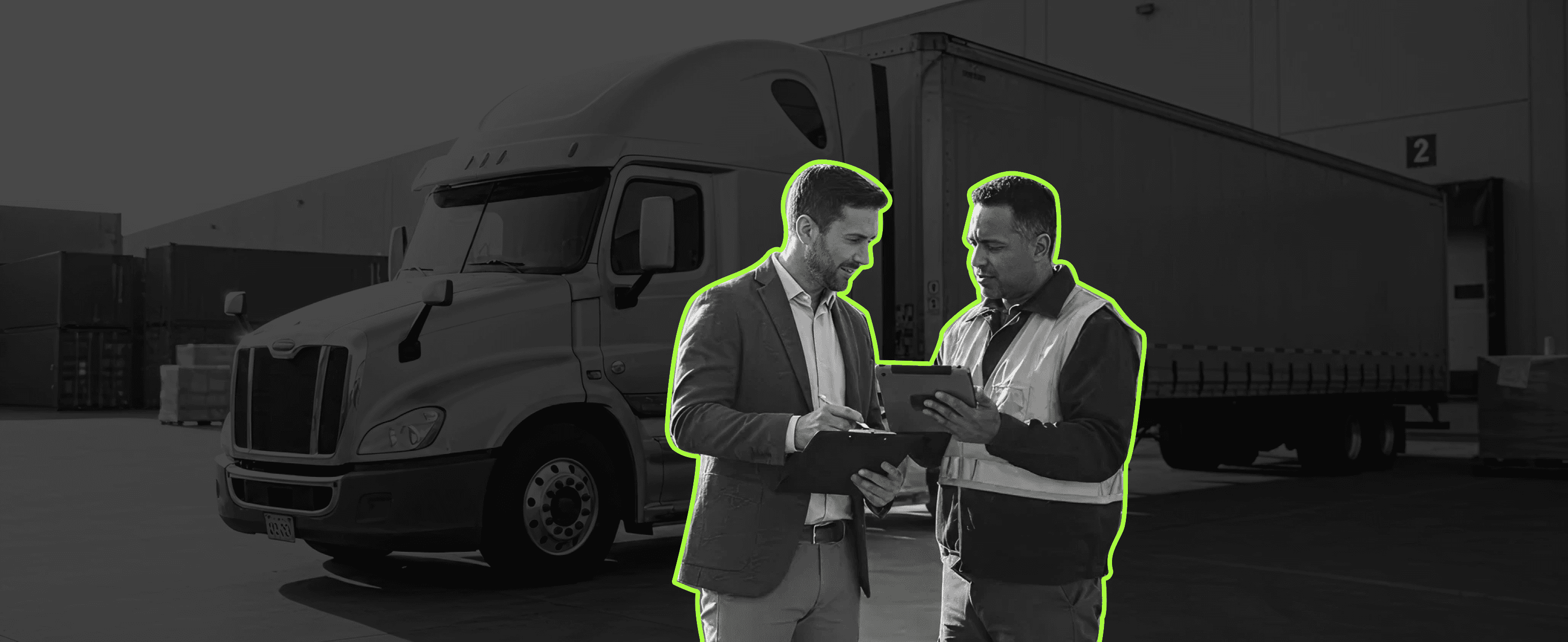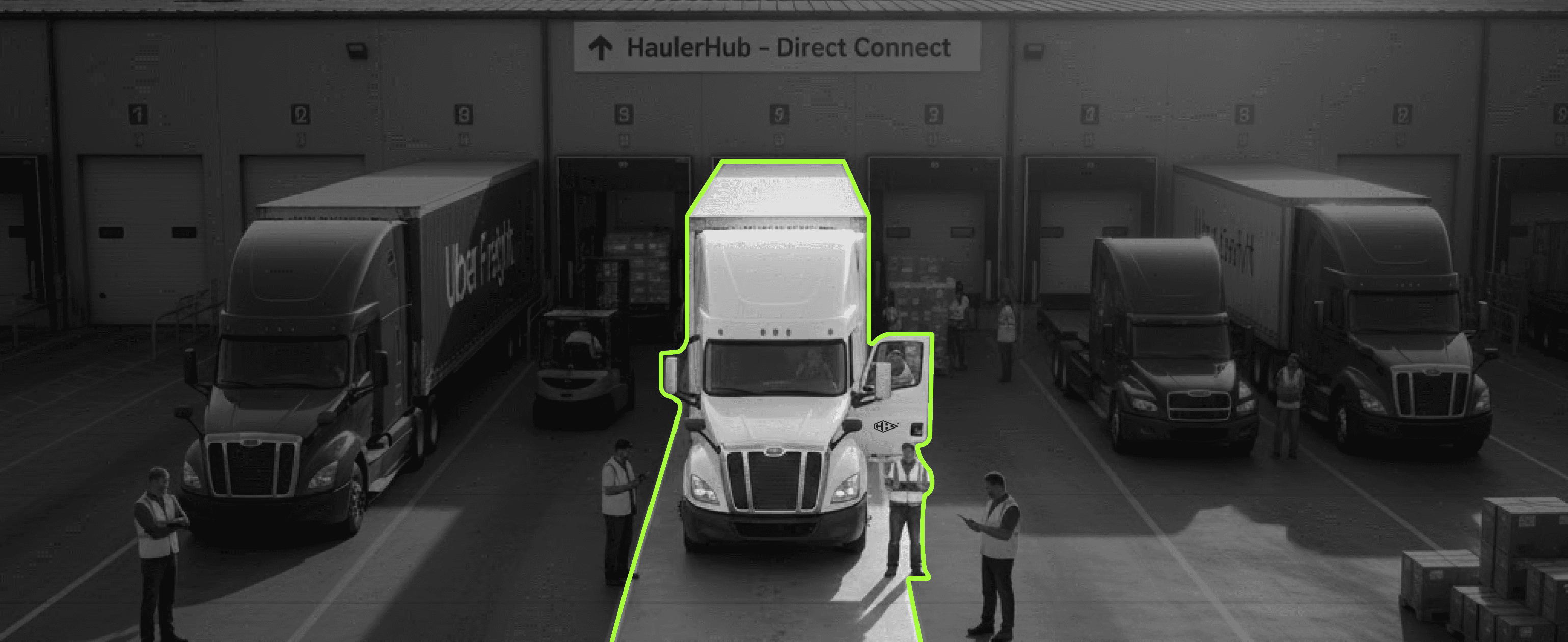Apr 9, 2025
Scroll to explore
In nature, one of the most amazing partnerships is between the Nile crocodile and the tiny plover bird. The huge crocodile opens its jaws wide so the small bird can hop inside and clean parasites from its teeth. The crocodile gets clean teeth, and the bird gets a good meal. They both win by working together.
This teamwork mirrors how Canada and the US trade with each other. Though very different in size, these two countries help each other succeed.
At HaulerHub, we see this partnership in action every day as we help move goods across one of the world's busiest borders.
Historical Context: A Foundation of Economic Partnership
Think of a coral reef where fish, plants, and other sea life all help each other survive. That's how the Canada-US trade relationship works. With over $2 billion in trade and thousands of people crossing the border each day, this busy route keeps both countries' economies strong.
In 2024, Canada sold $596.2 billion worth of goods to the United States. It bought $471.3 billion from the US. This gave Canada a surplus of $124.9 billion. These numbers show how important this relationship is to Canada's success. Over the years, deals like NAFTA and USMCA have helped build today's shipping networks.
Current Trade Landscape: Navigating New Challenges
Recent policy changes and tariffs have made cross-border shipping more complex. The US buys a lot of energy from Canada, creating both chances and tensions in trade.
We've seen a clear shift in how Canadians shop. The "Buy Canadian" movement is growing fast, with many businesses now highlighting locally-made products.
This change goes beyond just business. Statistics Canada shows that Canadians took 8.0 million trips to the United States from July to September 2024, up 16.1% from the same time in 2023.
But newer numbers show a drop in travel due to policy changes and stricter border rules. In February 2025, air travel by Canadians to the US fell 13%, and border crossings by car dropped 23% compared to last year. This affects not just tourism but all trade between the countries.
Cultural tensions have also grown. In February, news outlets reported Quebec hockey fans booing during the American national anthem. Events like the "True North Strong" movement in Quebec show growing Canadian pride.
These feelings are starting to affect business choices, including how companies plan their shipping and supply chains.
Aluminum Tariffs: When Partners Face Challenges
Picture oxpecker birds sitting on a rhino's back. The birds eat ticks and warn of danger while the rhino gives them a safe place to perch. Both get what they need. This is like the aluminum trade between Canada and the US – but lately, this partnership has hit some bumps.
Talk about bringing back aluminum tariffs is causing stress in this trade relationship. Canada sends about 60% of all aluminum that the US buys. This metal is key for making cars, planes, buildings, and even soda cans in America.
When tariffs change how aluminum moves across the border, shipping plans get messy on both sides. We see a clear pattern: a rush to ship before tariffs hit, then quick changes to routes and paperwork as everyone adjusts.
Tariffs also affect jobs in both countries. They might save some US aluminum factory jobs for now, but they put pressure on many more workers who make things using aluminum. For every person working in an aluminum plant, about 40 people work in businesses that use aluminum to make products.
Internal Trade Barriers: Canada's Own Logistics Challenge
Picture a garden where clownfish and sea anemones help each other thrive. The clownfish brings food to the anemone while getting protection in return. This is how trade should work between Canadian provinces – but right now, it doesn't.
While Canada works on its US trade issues, it's also dealing with problems at home. The "invisible walls" between provinces make shipping within Canada surprisingly hard. In fact, it's often easier to send goods to the US than to another Canadian province.
Prime Minister Mark Carney has made eliminating these interprovincial trade barriers a cornerstone policy, with a target date of July 1st. Economic forecasts suggest this could boost the Canadian economy by up to 8% and reduce trade costs by 15%. However, studies have shown that provincial borders may impede trade, with the amount of trade across provinces estimated to be at a level that would be expected if a 6.9% tariff were imposed on interprovincial trade.
Provincial disputes continue to complicate this picture. The ongoing energy policy differences between Ontario and Alberta exemplify how regional interests can conflict with national economic strategy.
For shipping and logistics providers, navigating these internal complexities requires the same sophisticated approach as managing international trade challenges.
Economic Symbiosis: The Reality of Interdependence
Despite tensions, one fact remains clear: Canada and the US need each other. With Canada having just one-tenth of the US population, the size difference creates natural dependencies.
Think of a car – the engine, wheels, and steering all do different jobs, but they must work together for the car to run. That's exactly how the auto industry works across the border. Parts move back and forth between Ontario and Michigan as cars are built. In 2024, a huge 93.4% of Canada's cars and light trucks went to the United States. A typical vehicle crosses the border many times during production.
The Way Forward: Innovation in Shipping and Logistics

Think of bees and flowers working together - bees get food while flowers get pollinated. Everyone wins! The future of Canada-US trade needs this same kind of teamwork, with some smart new approaches. Three big trends are changing how shipping works:
1. Using mid-sized ships and multiple transport types: New environmental rules and the need to save money are pushing companies to be more flexible about how they ship goods, especially in the Great Lakes area.
2. Digital tools for customs and rules:As border rules change, tech platforms that handle paperwork and keep shipments legal are becoming must-haves.
3. Seeing your shipments in real time: Being able to track exactly where your goods are as they cross the border isn't just nice to have – it's essential for running a smooth operation.
At HaulerHub, we're transforming how you handle these challenges with our all-in-one platform.
Our real-time tracking puts you in control, letting you watch your freight without even logging in. You get total visibility for better planning.
Our system also shows you why delays happen and helps prevent future problems.
Plus, we wipe out manual data entry with our simple API and EDI connections.
Conclusion: Building a Better Future Together
Just like the crocodile and plover bird, Canada and the US may not always see eye to eye, but they both win by working together. Companies that understand both the challenges and chances in this partnership will lead the future of shipping.
For Canadian businesses looking to improve their supply chains, the key is taking control with tools that give you flexibility, visibility, and simpler operations. The right shipping technology doesn't just move your stuff—it gives you an edge by adapting smartly to market changes.
At HaulerHub, we're here to empower your business with tools that help you succeed in this complex world. Our all-in-one platform brings all your shipping needs into one simple system. We cut through complexity, reduce mistakes, save time, and boost your efficiency. Because in international trade, success doesn't come to those who resist change—it comes to those who embrace it.
About HaulerHub:
HaulerHub transforms shipping by putting you in control 🚚. Our platform connects you directly with trusted haulers and cuts out broker markups through automated systems, saving you significant money. We boost your security with our carrier compliance checks, so you always know who's handling your cargo, preventing theft. With our real-time updates, smart documents, and driver chat portal, we give you crystal-clear visibility at every step. Whether you're shipping across borders or within Canada, HaulerHub gives you total control of your shipping world.
Checkout other blogs

Stay ahead of the supply chain.
Break free from costly and complex systems. Sign up with HaulerHub now and make shipping a breeze.




